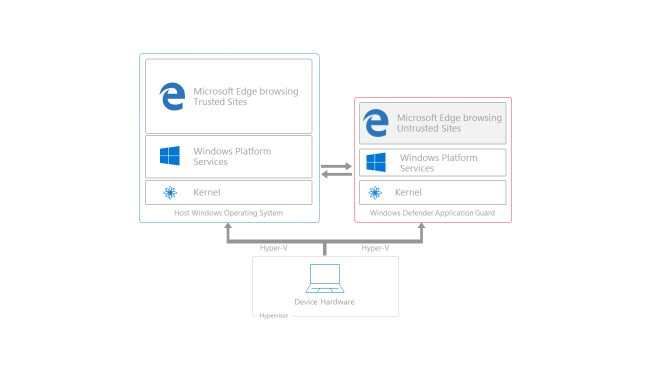Windows 10 will soon run Edge in a virtual machine to keep you safe
Ars Technica 2016-09-27

Enlarge / Untrusted sites get a minimal set of Windows Platform Services and no access to the rest of the system. (credit: Microsoft)
ATLANTA—Microsoft has announced that the next major update to Windows 10 will run its Edge browser in a lightweight virtual machine. Running the update in a virtual machine will make exploiting the browser and attacking the operating system or compromising user data more challenging.
Called Windows Defender Application Guard for Microsoft Edge, the new capability builds on the virtual machine-based security that was first introduced last summer in Windows 10. Windows 10's Virtualization Based Security (VBS) uses small virtual machines and the Hyper-V hypervisor to isolate certain critical data and processes from the rest of the system. The most important of these is Credential Guard, which stores network credentials and password hashes in an isolated virtual machine. This isolation prevents the popular MimiKatz tool from harvesting those password hashes. In turn, it also prevents a hacker from breaking into one machine and then using stolen credentials to spread to other machines on the same network.
The Edge browser already creates a secure sandbox for its processes, a technique that tries to limit the damage that can be done when malicious code runs within the browser. The sandbox has limited access to the rest of the system and its data, so successful exploits need to break free from the sandbox's constraints. Often they do this by attacking the operating system itself, using operating system flaws to elevate their privileges.